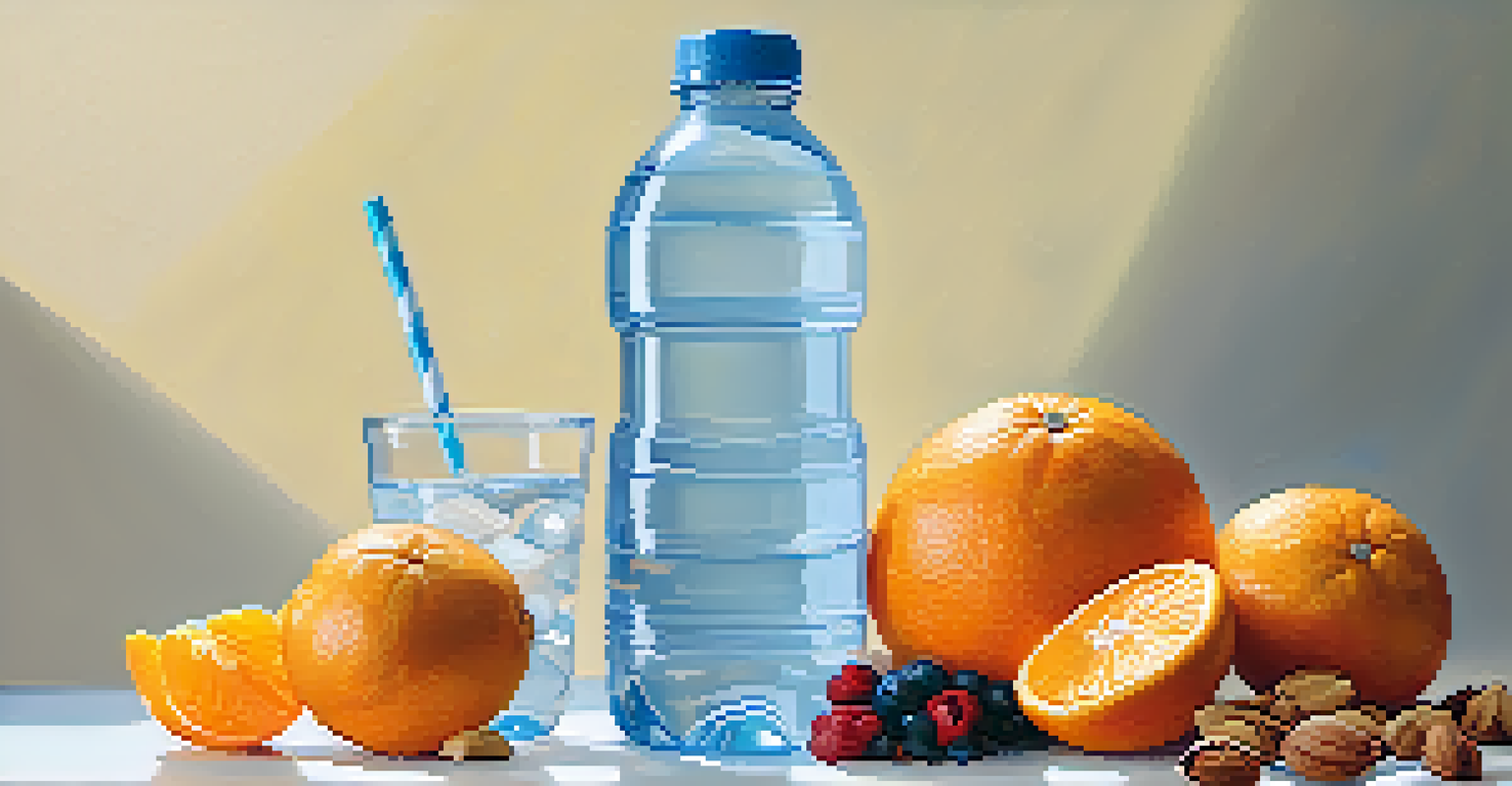Creating a Dancer's Meal Plan for Optimal Training Results

Understanding the Nutritional Needs of Dancers
Dancers require a diet rich in nutrients to fuel their rigorous training. This includes a balance of carbohydrates, proteins, and healthy fats, which provide energy and support muscle recovery. Just like a car needs the right fuel to run smoothly, dancers need the right food to perform at their best.
Take care of your body. It's the only place you have to live.
Carbohydrates are the primary source of energy, so incorporating whole grains, fruits, and vegetables is essential. Proteins, found in lean meats, dairy, and legumes, help in repairing and building muscles after intense sessions. Healthy fats, such as those from nuts and avocados, also play a crucial role in hormone regulation and overall health.
Ultimately, understanding these nutritional needs is the first step in creating a meal plan that supports a dancer's unique lifestyle and training demands. A well-rounded diet not only enhances performance but also promotes longevity in a dancer's career.
Crafting Balanced Meals for Optimal Performance
Creating balanced meals is all about proportion and variety. A typical dancer's plate should consist of about 50% carbohydrates, 25% protein, and 25% healthy fats. Visualize your plate: half filled with colorful veggies and whole grains, a quarter with a protein source, and the rest with healthy fats – it’s as pleasing to the eye as it is to the body.

For example, a delicious meal might include grilled chicken (protein), quinoa (carb), and a side of sautéed spinach and olive oil (fat). This combination not only fuels the body but also keeps energy levels stable throughout the day. Variety is key; different colors on your plate often indicate a range of essential nutrients.
Nutrition Fuels Dance Performance
Dancers need a balanced diet of carbohydrates, proteins, and healthy fats to support their energy levels and muscle recovery.
Experimenting with different recipes can make meal prep enjoyable and keep your diet exciting. Remember, consistency is important, but so is enjoyment. When food is delightful, it’s easier to stick to a plan.
Timing Your Meals Around Training Sessions
Meal timing can significantly impact a dancer's energy levels and performance. Eating a balanced meal about three hours before training ensures that your body has ample time to digest and convert food into usable energy. Think of it like filling up a gas tank before a long drive; you want to make sure you're fully fueled.
You are what you eat, so don't be fast, cheap, easy, or fake.
For shorter training sessions, a light snack about 30 minutes prior can be beneficial. Options like a banana or a granola bar provide quick energy without weighing you down. This snack acts like a power-up in a video game, giving you that extra boost right when you need it.
After training, a recovery meal rich in protein and carbs helps replenish lost nutrients and repair muscles. It’s like recharging your phone after a long day; without that recharge, your performance the next day may suffer.
Hydration: The Unsung Hero of Dance Nutrition
Hydration is often overlooked but is critical for dancers. Water helps transport nutrients, regulate body temperature, and prevent fatigue. Just like a plant wilts without water, a dancer's performance diminishes without proper hydration.
Dancers should aim to drink water consistently throughout the day, not just during training. A good rule of thumb is to drink at least half your body weight in ounces daily. For example, if you weigh 150 pounds, aim for 75 ounces of water each day.
Hydration Is Essential for Dancers
Staying hydrated is crucial for maintaining performance, as water aids in nutrient transport and prevents fatigue.
In addition to water, electrolyte-rich drinks can be beneficial during intense sessions. Coconut water or sports drinks can help replenish what you lose through sweat, keeping you energized and ready to dance your best.
Snacking Smart: Fuel Between Meals
Snacks play a crucial role in providing dancers with the energy they need throughout the day. Smart snacking can prevent energy crashes and keep you focused. Think of snacks as mini fuel stops on a long journey; they help maintain your energy levels.
Opt for nutrient-dense snacks like Greek yogurt with fruit, nuts, or whole-grain crackers with hummus. These options provide a good mix of protein, carbs, and healthy fats to keep your energy stable. It's all about choosing snacks that not only satisfy cravings but also nourish your body.
Having healthy snacks on hand can also prevent the temptation of less nutritious options. Prepare snacks in advance, so you’re never caught unprepared during a busy dance day.
Adjusting Your Meal Plan for Different Training Phases
A dancer's training schedule often changes, which means their meal plan should adapt as well. During intense training periods, increasing caloric intake and focusing on recovery foods can be beneficial. Think of your meal plan as a flexible friend; it should support you no matter what phase you’re in.
Conversely, during off-seasons or lighter training periods, you may want to adjust your portions slightly to avoid unwanted weight gain. It’s all about listening to your body and recognizing its needs during different times of the year.
Meal Plans Should Adapt to Training
A dancer's meal plan must be flexible, adjusting caloric intake and food types based on training intensity and phases.
Being proactive about these adjustments can help maintain performance levels and overall well-being throughout your dancing journey. Remember, what works for one dancer may not work for another; personalization is key.
Seeking Professional Guidance for Meal Planning
While the basics of meal planning can be straightforward, seeking advice from a nutritionist or dietitian can take your meal plan to the next level. These professionals can tailor a plan specifically to your needs, preferences, and performance goals. It’s like having a personal coach for your diet.
A registered dietitian can provide insight into specific dietary requirements based on training intensity, body composition goals, and any dietary restrictions you may have. They can help you navigate the sometimes overwhelming world of nutrition, ensuring you make the best choices for your body.

Investing in professional advice can lead to better training outcomes and overall health, making it a worthwhile consideration for any serious dancer. After all, your body deserves the best fuel for the incredible work it does.